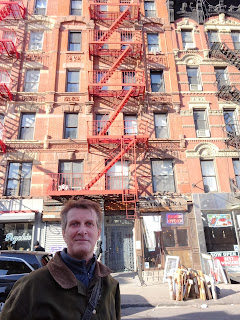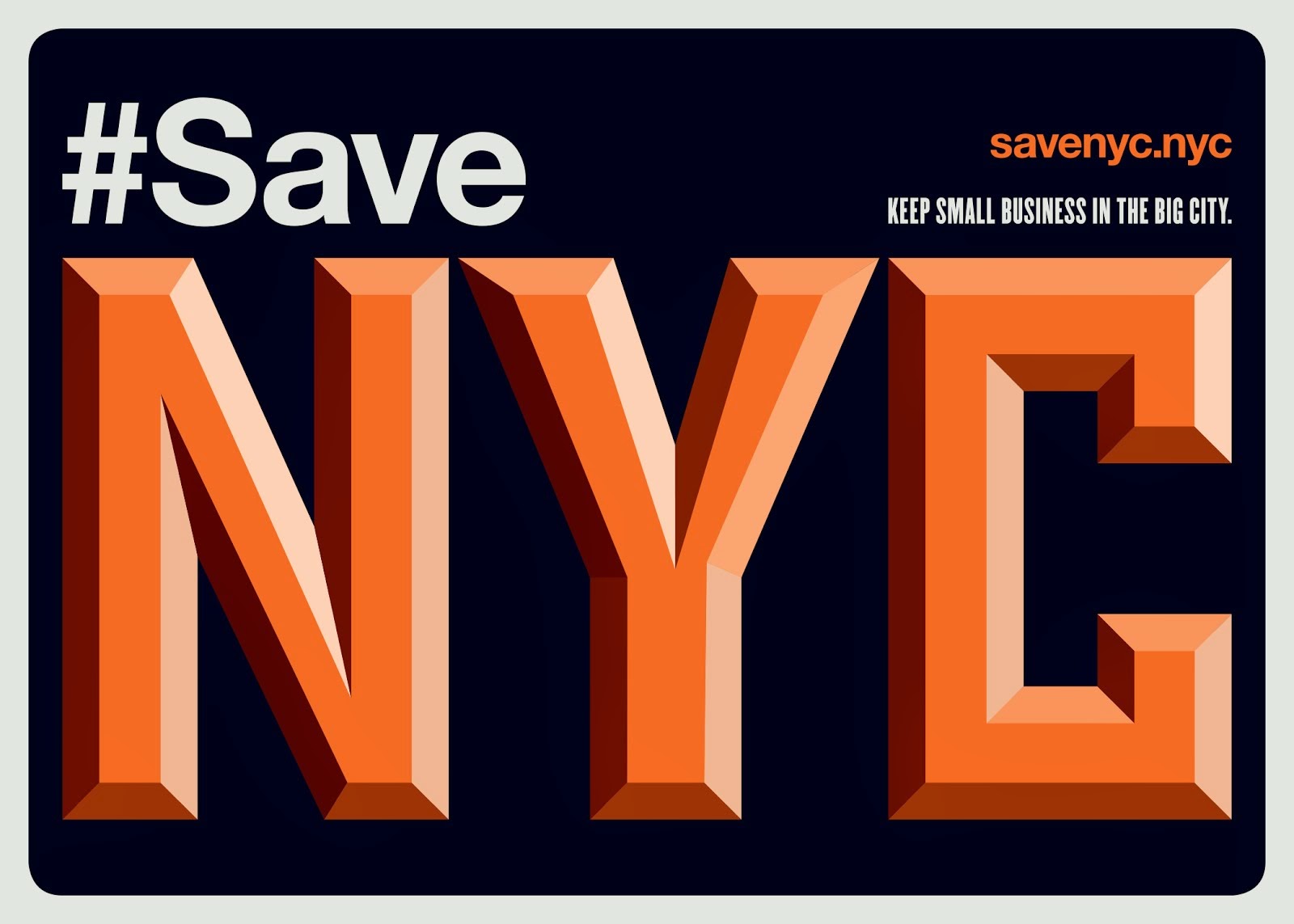"The book is completely about the evolving streetscape of New York," says Gill. "The city is constantly destroying itself. Regenerating. It's always been a city in a hurry."

Gill's inspiration for the book was a man named Ivan Karp, a self-taught gargoyle hunter who put together a team in the 1950s and led "clandestine raids on demolition sites." It was the time of Urban Renewal when countless tenements were destroyed, taking their decorations with them. Karp saved some 1,500 sculptures and eventually got the Brooklyn Museum to take them in.
Since the days of Urban Renewal, housing for low-income people doesn't come with much in the way of beauty or aliveness.
Gill and I are standing on Madison Street and Rutgers. On one side are tenements, covered in ornamentation--demon faces, cherubs, sea monsters, nudes. Their first floors are full of businesses like bodegas and Chinese restaurants. The sidewalk is busy. Across the street are the public housing towers that came out of the 1950s. They are dull and drab. Little life occurs at their feet.

Decorating tenements wasn't an act of landlord generosity--it was a marketing tool, says Gill. "The goal was not to create beauty, it was just to dress up shabby housing for the poor. It makes it look fancier than it is." Still, the decorations made for a livelier streetscape, one much less homogeneous than what we have today.
"You can feel the imprint of the individual in the object," says Gill. Then he points across the street at the housing projects. "These monstrosities are just boxes for housing low-income humans."

On the tenements, the ornaments generally come in two types: terracotta and stone. The terracotta pieces, Gill explains, were produced in a factory. The stone pieces were carved. How to tell the difference? Terracotta works tend to be sharper, while stone pieces are more likely worn away by time.
Many men among the nineteenth-century immigrants who came to New York were stone carvers. "They carved the monuments, the statues and gravestones, of Europe," says Gill, and then they carved the monuments on the faces of the tenements built for them to live in. "These gifted carvers are decorating their own housing. "
The architects didn't specify on the blueprints what decorations they wanted. "They'd just write 'carving,' and then the foreman might say 'Give me a Mary' or 'Give me a Moses,'" generic terms for a type of male and female face. "So the carver would do what he wanted. They'd carve each other's faces. Or the cop, the barkeep, or a girlfriend. So when you look up at these buildings, you're seeing the New Yorkers of the late nineteenth century looking back at you."

This stuff is in Gill's DNA. His mother, Jill Gill, was a gargoyle hunter. A self-taught artist, she painted street scenes as they were vanishing, and when she came across a forsaken ornament from a demolished tenement, she'd load it into her baby's stroller and cart it home. "My mother was obsessed about this," says Gill, but he didn't pay much attention to it in his youth.
It wasn't until he started writing for the New York Times' City Section that he "Gravitated toward historic preservation." Now, he says, "The ephemeral nature of New York's cityscape is my eternal fascination."

He wants to make it a fascination for his readers, too. "New Yorkers never look up," says Gill. And there is so much they're missing. The carvers of the past "incised their imagination onto our streetscape. They turned the streets of New York into marvelous public art galleries."
After you read The Gargoyle Hunters, you might find yourself looking up more often.
Read more about The Gargoyle Hunters and find out where John will be next

















